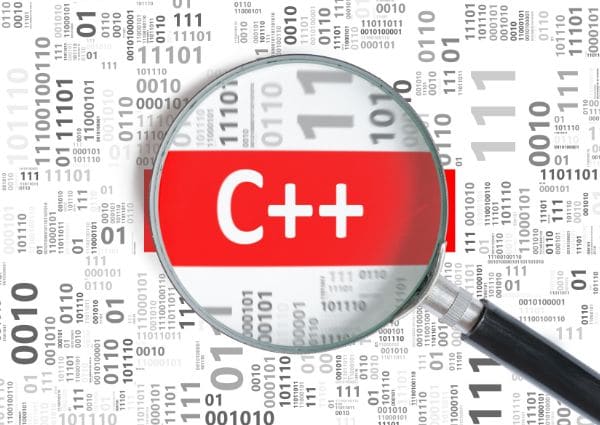Embedded programming languages are designed to create software for embedded systems and devices, such as microcontrollers, sensors, digital signal processors, and field-programmable gate arrays. This short guide will explore some of the different embedded programming languages available, as well as their pros and cons.
What are embedded programming languages?
Embedded programming languages are designed specifically for microcontroller-based applications and other devices that require low power and minimal memory usage. These languages provide instructions to the processor so that it can execute operations with the help of a compiler, interpreter, or direct machine language. Examples of embedded programming languages include C, C++, Assembly, BASIC, Java, and JavaScript.
The embedded language programming can be seen in many devices (check our embedded systems examples article). However it is hard to tell which language is the best option for a specific embedded device, it all depends on the complexity of the system, and the requirements of the client. This is a common question we get when entrepreneurs come to us looking for firmware development services.
Even for custom hardware design services, many clients get surprised with the amount of languages that can be used to program embedded systems.
Most popular language for embedded systems

There are several languages for embedded systems that are relevant for embedded systems. These languages have become an essential tool for developers working on embedded systems. They offer a variety of advantages, such as the ability to integrate hardware and software components, but they also present some limitations.
C (Top embedded programming language)
C is among the best programming languages for embedded systems. It is one of the oldest and most widely used embedded programming languages, which was developed in the early 1970s. C is a compiled language that helps to create programs for low-level microcontroller applications such as those found in automotive applications and home appliances (see some IoT examples).
C language is the industry standard for a wide variety of applications, with estimates suggesting that up to 80% of embedded systems leverage the language. C is favored for its efficiency and widespread use in the sector. The downside of this embedded systems programming language is that its developers must be knowledgeable and be able to utilize complex coding techniques.
C++
Another popular embedded programming language is C++. This language for embedded systems offers many advantages to coders, due to their efficiency and standard library. C++ is especially effective as it can streamline the coding process by providing useful libraries that make writing code faster and simpler. However, one major disadvantage of this embedded programming language is that it is not easy to learn due to its complexity.
Java
Java is a programming language that is efficient and versatile, it has been very popular in internet-based applications. And for embedded systems, it does a great job with devices that rely on the Android operating system (see IoT with Java).
The main benefit of this embedded programming language is its portability. Additionally, due to their reliable nature, such programs are extremely reliable and enable greater control when interacting with low-level hardware. This makes a great difference with software (Firmware vs Software).
Assembly
Assembly is a well-known language for embedded systems. The great benefit of this language is that it is capable of interacting easily with hardware systems. The downside of this language is its complexity and difficulty to maintain in the long term.
Nowadays, assembly embedded language is not used a lot, we recommend using it only if you want an absolute control of the system, or in the scenario where you want to build your own OS (Operative System).
Python

Python also enters on this list of the most known programming languages for embedded systems. It is a popular choice for automation tasks such as machine learning, artificial intelligence (AI), and data analytics due to its versatile nature.
This programming language offers a number of advantages over typical programming languages. These include: being open source and free to use, making them easy to learn and write; Python can be extended to other languages like C, or C++; highly optimized for small-sized embedded systems, especially IoT projects, enabling smooth performance even with limited computing resources.
Among the disadvantages of the Python language, we find there are speed limitations since it executes line by line, and there are some design restrictions.
What is the best embedded programming language for you?
The answer to this question may depend on different factors:
- Level of familiarity with the language.
- The type of project you’re building.
- The requirements of your project.
If you would like to accept some suggestions, we would go with C, C++, or Python. So, next time you are in the process of electronic product design, consider the recommendations given above.
How can DeepSea Developments help you with firmware?
DeepSea Developments can provide you with expert software and firmware programming and consulting services for embedded systems. Our experienced engineers are multidisciplinary, and they can help you design customized, highly efficient embedded firmware for whatever project you are working on – from small-scale proof of concept prototypes to complex applications.
From the information above, you could get an idea that there are many languages for embedded systems. If you still have questions regarding your project, we invite you to get in contact with us, we will be happy to help you out.






